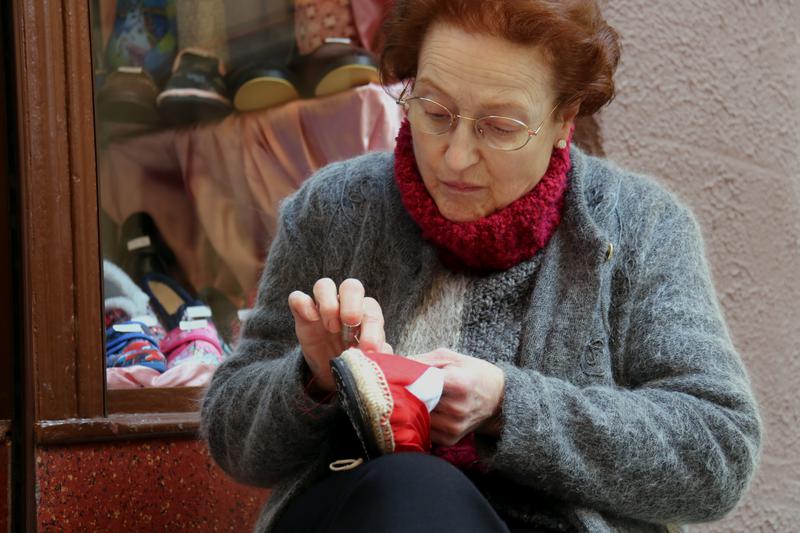The espadrille revolution: worldwide demand for traditional Catalan footwear
Around a dozen artisans in Catalonia still make the shoes by hand

Maria Carme Grifell, from the small town of Solsona in central Catalonia, is a third-generation espadrille-maker, one of the dozen or so that are left across the territory.
At age 70, she is still at the head of Seixanta-cinc, a small store in the town center where she makes the typical esparto-soled Catalan footwear by hand.
"In the mid-19th century there were many espadrille-makers across Catalonia," the artisan told the Catalan News Agency in a recent interview. A century later, there were only four. "We should not lose these Catalan traditions," she said – a handful of people have since joined the trade, but far from the numbers seen in its heyday.
No longer only for peasants
Grifell, who laces espadrilles (or 'espardenyes' as they are known in Catalan) every day, has seen first-hand how styles have evolved over time and has had to reinvent herself.
A symbol of Catalan folklore that was once worn by peasants, there are now many kinds of espadrilles, from the classical flat sole with canvas or cotton fabric tops to the high-heeled or platform shoe.
And no longer exclusively for farmers or shepherds, they are now worn by a wide variety of people who have fallen in love with their light, breathable quality.
"It seems like they're in fashion," Grifell said. "People wear them to parties and weddings and even some brides and grooms wear them when they get married."
Roger Mas, a musician from Solsona, has become an ambassador of sorts of this traditional footwear and wears espadrilles while performing on stage.
"Here in Solsona it's what you'd wear during 'festa major' festivities or other special occasions," he recalled. Now, he says, he always wears them at his concerts because they distinguish him from his usual self "and the person called Roger Mas who sings for two hours."
Selling espadrilles abroad
France is one of the biggest buyers of Catalan espadrilles.
"They value our work there," said Susana Cuervas of D'spart, an espadrille store in the central Catalonia city of Manresa. Her business has also had orders come in from places like India, Belgium, or Greece.
D'spart makes around 6,000 espadrilles per year, with most of their sales in spring or summer as the weather gets warmer.
The espadrille, Cuervas argued, "has never stopped being worn" – it has only changed over time, which is why she believes "there is still a lot of work in the sector."